Growing rice, a staple food for a large part of the world’s population, can be a surprisingly fulfilling experience for a home gardener.
While it’s traditionally grown on a large scale in paddies, rice can also be cultivated in smaller garden spaces or containers.
As an enthusiastic gardening blogger, I find the process of growing rice both educational and rewarding. It offers a chance to understand and appreciate the work that goes into producing this essential grain.
In this article, we’ll explore the benefits of growing rice at home, discuss some popular varieties, and provide essential care tips to help you embark on this unique gardening adventure.
Benefits of Growing Rice
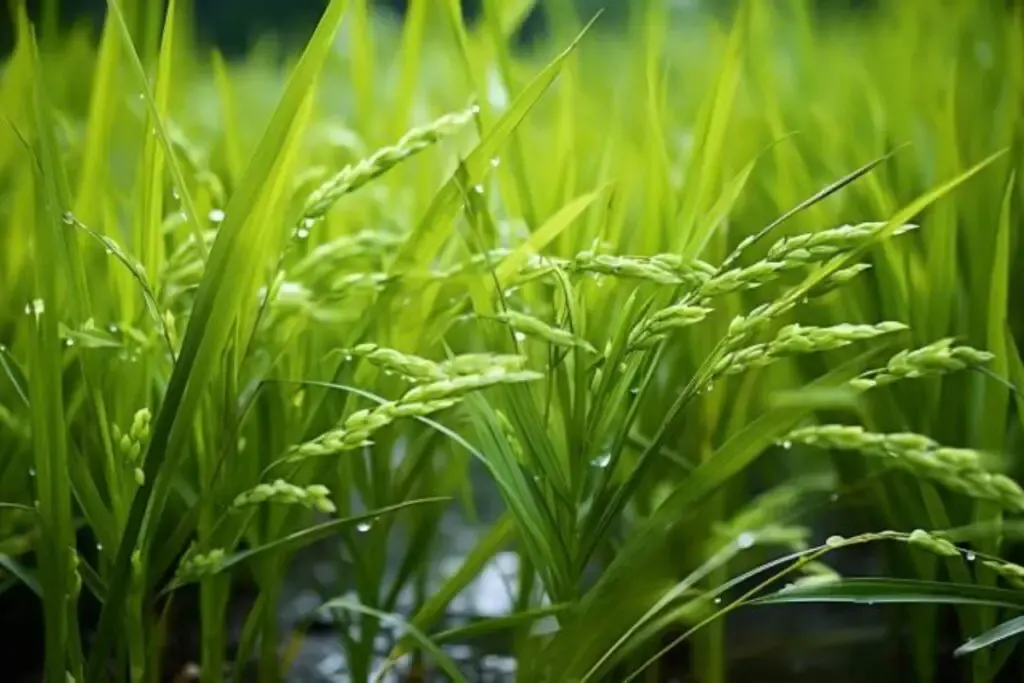
1. Educational Value
Growing rice can be a great educational experience, especially for those unfamiliar with how this widely consumed staple is cultivated.
It offers insight into the agricultural practices and challenges faced in rice production.
2. Sustainability
By growing your own rice, you can contribute to sustainable food practices. Homegrown rice reduces the environmental impact associated with large-scale commercial rice farming, such as water usage and carbon emissions from transportation.
3. Culinary Freshness
There’s a unique satisfaction in cooking and eating rice that you’ve grown yourself.
Homegrown rice may offer a fresher taste and a deeper connection to the food on your plate.
My Favorite Rice Varieties
Rice comes in many varieties, each with its unique characteristics. Here are three varieties that are particularly interesting for home gardeners:
1. Jasmine Rice
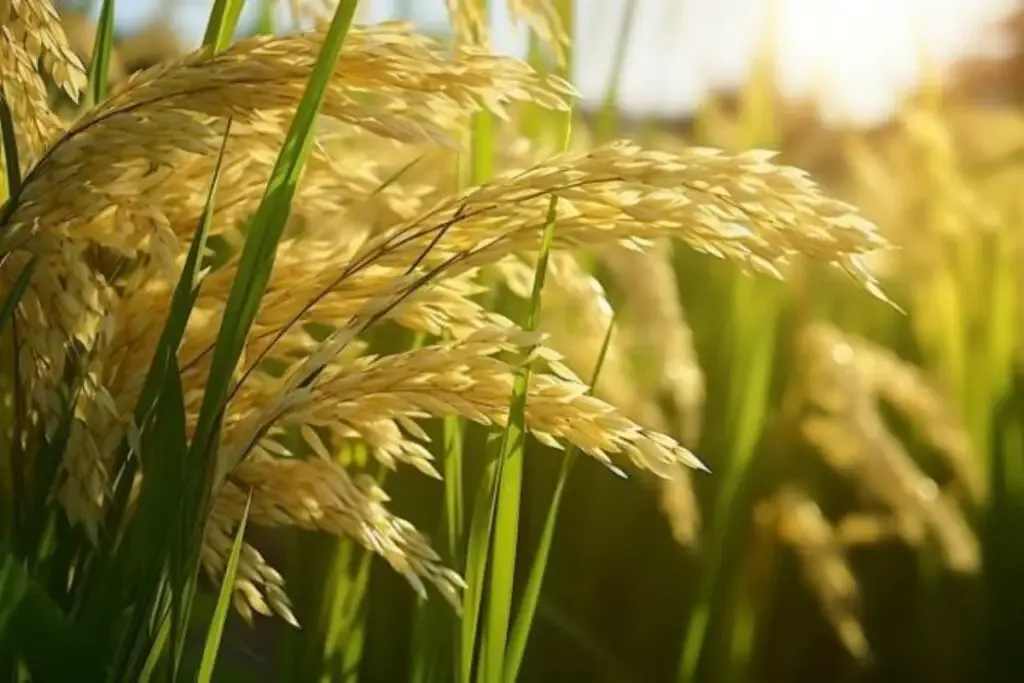
Known for its fragrant aroma and delicate flavor, Jasmine rice is a long-grain variety that is relatively easy to grow. It’s perfect for those looking to grow a rice variety that’s commonly used in culinary dishes.
2. Basmati Rice
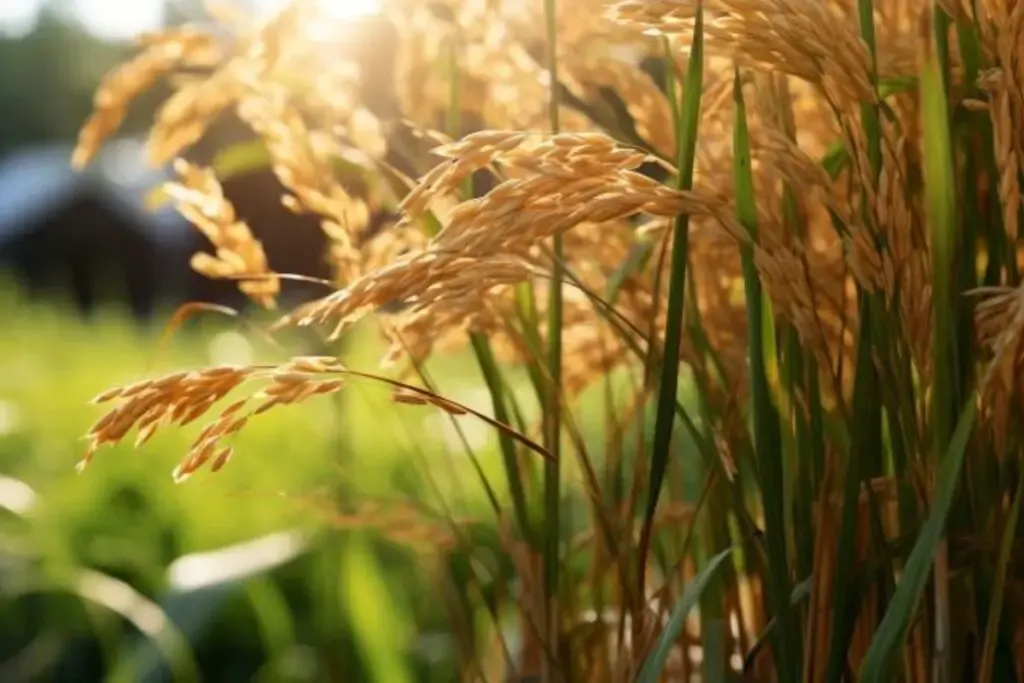
Another aromatic long-grain rice, Basmati is popular in Indian and Pakistani cuisine. It has a unique, nutty flavor and is ideal for dishes like biryani and pilaf.
3. Black Rice (Forbidden Rice)
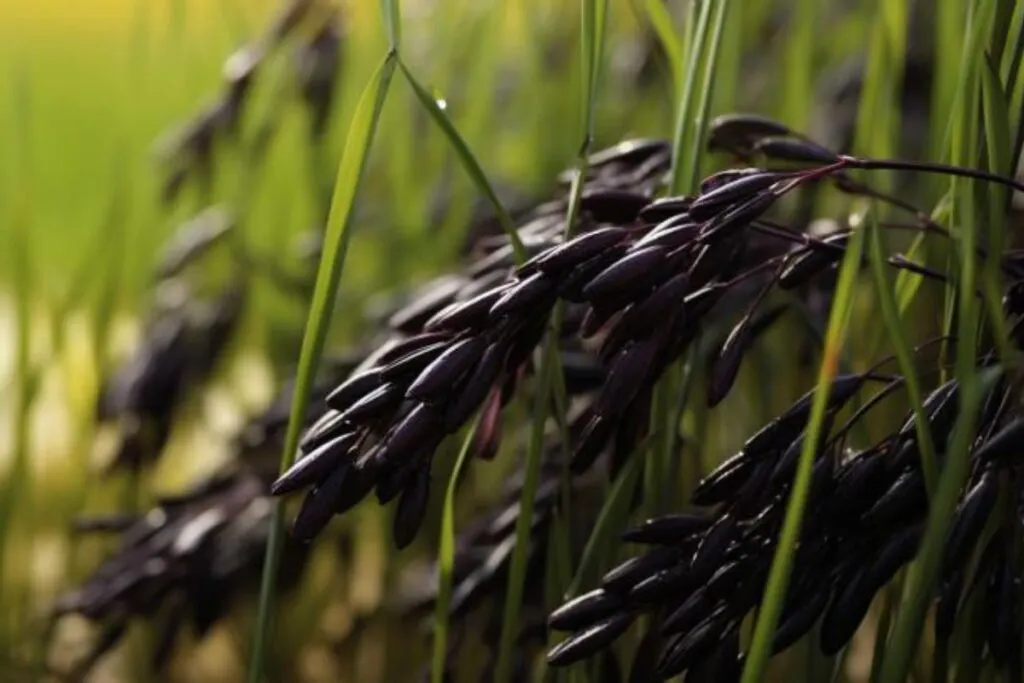
This is a short-grain, heirloom variety known for its striking dark purple color when cooked. It’s rich in antioxidants and has a slightly sweet, nutty flavor.
Black rice can be more challenging to grow but is rewarding for its unique nutritional and culinary properties.
Rice Care
Rice is a unique crop to grow, requiring specific conditions to thrive. Understanding these requirements is key to a successful rice harvest.
Let’s explore the various aspects of rice care, including planting, light, soil, water, temperature, humidity, and fertilizer needs.
Planting
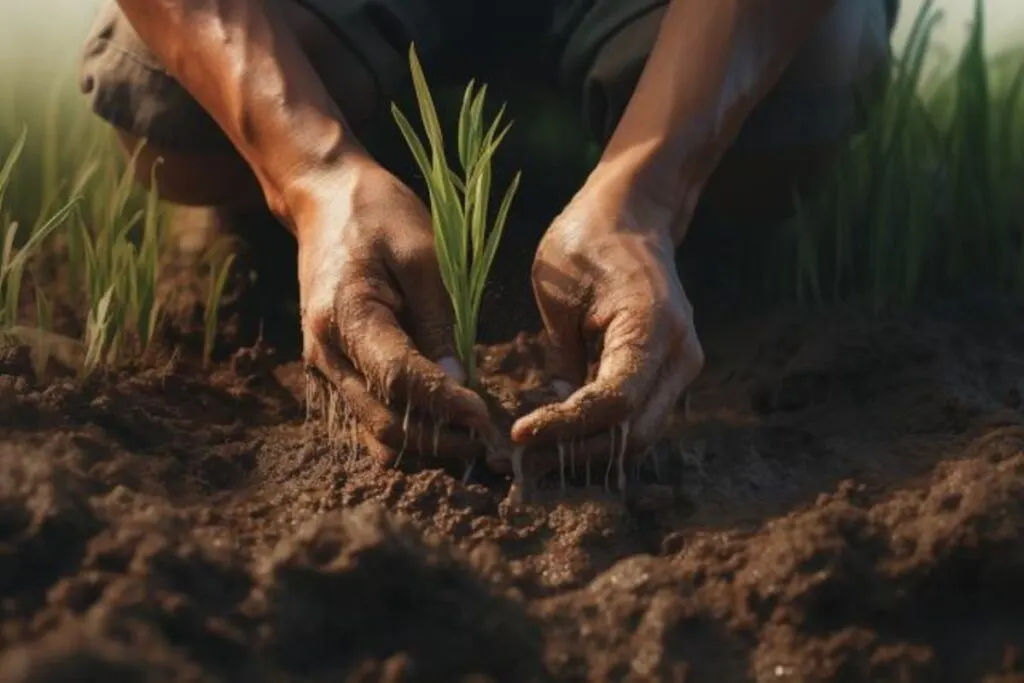
Rice seeds should be started indoors about 4-6 weeks before the last expected frost date. Use a shallow tray filled with a fine, soilless mix, planting the seeds about 1/4 inch deep.
Keep the soil consistently moist. Once the seedlings are about 5-6 inches tall and the danger of frost has passed, they can be transplanted outdoors.
In traditional rice cultivation, seedlings are planted in flooded fields known as paddies. However, rice can also be grown in well-watered garden beds or large containers.
Light
Rice plants require full sun, meaning at least 6-8 hours of direct sunlight daily. Adequate sunlight is crucial for the development of the grains.
Soil
The ideal soil for growing rice is a fertile, well-draining loamy soil. The soil should be able to retain moisture yet not become waterlogged.
A slightly acidic to neutral pH (around 6.0-7.0) is preferred. If growing in containers, use a high-quality potting mix and ensure good drainage.
Water
Water is a critical component of rice cultivation. In traditional paddy fields, rice plants are grown in 2-4 inches of standing water.
For home gardens, ensure the soil is consistently moist. If you’re not using the paddy method, regular, deep watering is necessary to maintain the required moisture level.
Temperature and Humidity
Rice grows best in warm, humid conditions. Ideal temperatures for growing rice range from 70°F to 90°F. Rice plants are not frost-tolerant and require a long, warm growing season to mature properly.
Fertilizer
Rice plants benefit from fertilization, but it’s essential to avoid over-fertilizing, which can lead to excessive vegetative growth at the expense of grain development.
Use a balanced, slow-release fertilizer at the time of planting, and consider a top dressing of a nitrogen-rich fertilizer a few weeks after transplanting.
Harvesting Rice
Harvesting rice is a gratifying end to the growing process. Rice is ready to harvest when the grains are firm and the stalks have turned golden brown, typically about 4-5 months after planting.
To harvest, cut the stalks and gather them into bundles. Then, dry the stalks in a warm, sunny area for a couple of weeks until the grains are completely dry.
The final step is threshing, which involves removing the grain from the husks. This can be done by hand or with a mechanical thresher for larger quantities.
Pruning
Pruning is not a common practice in rice cultivation. Rice plants typically require all their foliage to produce the energy needed for grain development.
However, removing any diseased or damaged parts of the plant as soon as they are noticed is important to maintain overall plant health.
Propagating
Rice is primarily propagated from seeds. Propagation by division or cuttings is not typically done with rice plants. Each rice grain is a seed that can be planted to produce a new rice plant.
For a continuous supply, you can stagger the planting of rice seeds at different times throughout the growing season.
How to Grow Rice From Seed
Growing rice from seed involves starting the seeds indoors in a tray filled with a fine, soilless mix. Plant the seeds about 1/4 inch deep and keep the soil consistently moist.
Once the seedlings reach about 5-6 inches tall, they can be transplanted outdoors to a prepared garden bed or paddy. Ensure the area is well-watered or flooded, as rice plants need a lot of moisture to grow.
Growing in Pots
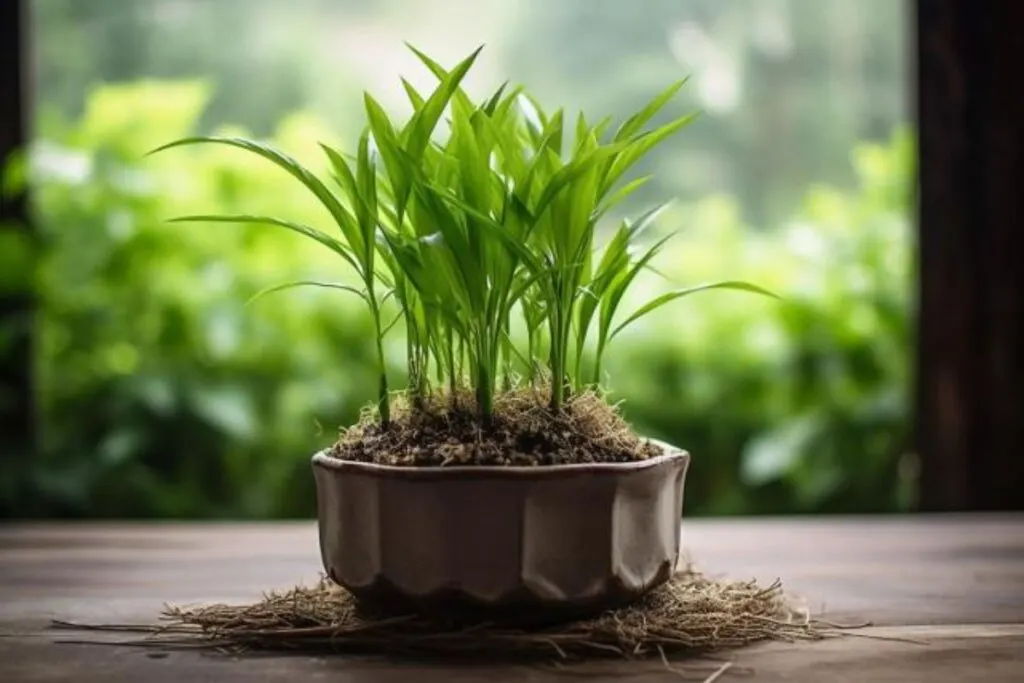
Growing rice in pots is possible and can be a fun project. Use a large container with good drainage and fill it with a rich potting mix.
Sow the rice seeds directly into the pot and keep the soil consistently moist, almost to the point of being waterlogged. Ensure the pot is in a location that receives full sun for the best results.
Overwintering
Overwintering rice plants is generally not applicable, as rice is an annual crop that completes its life cycle within a single growing season.
In climates where rice can be grown, it is planted after the last frost in spring and harvested in late summer or early fall before the first frost.
Since rice does not survive frost, it is not grown through the winter months. For continuous cultivation, new seeds are sown each spring.
Transplanting
Transplanting rice seedlings is a crucial step in the growing process. Start by sowing seeds in a controlled environment, like a greenhouse or indoors.
Once the seedlings reach about 5-6 inches in height and all danger of frost has passed, they are ready to be transplanted into their final growing location.
Carefully transplant the seedlings to a flooded field or well-watered garden bed, maintaining the moisture levels that rice plants need to thrive.
Common Pests & Diseases
Rice plants can be susceptible to a variety of pests and diseases.
Common pests include the rice weevil and the rice water weevil, which can be managed through crop rotation and the use of biological controls.
Diseases like rice blast, bacterial blight, and sheath blight can also affect rice plants. Proper crop management, including maintaining the right water levels and practicing good hygiene by removing plant debris, can help prevent these issues.
Growing rice, while it may seem unconventional for a home garden, can be a rewarding and educational experience.
It allows you to delve into a different aspect of gardening and gain an appreciation for one of the world’s most important staple crops.
From the tranquil beauty of rice paddy to the satisfaction of harvesting your own grains, growing rice can add a unique and enriching dimension to your gardening journey.
Remember, the key to successful rice cultivation lies in understanding and replicating its natural growing conditions as closely as possible.

